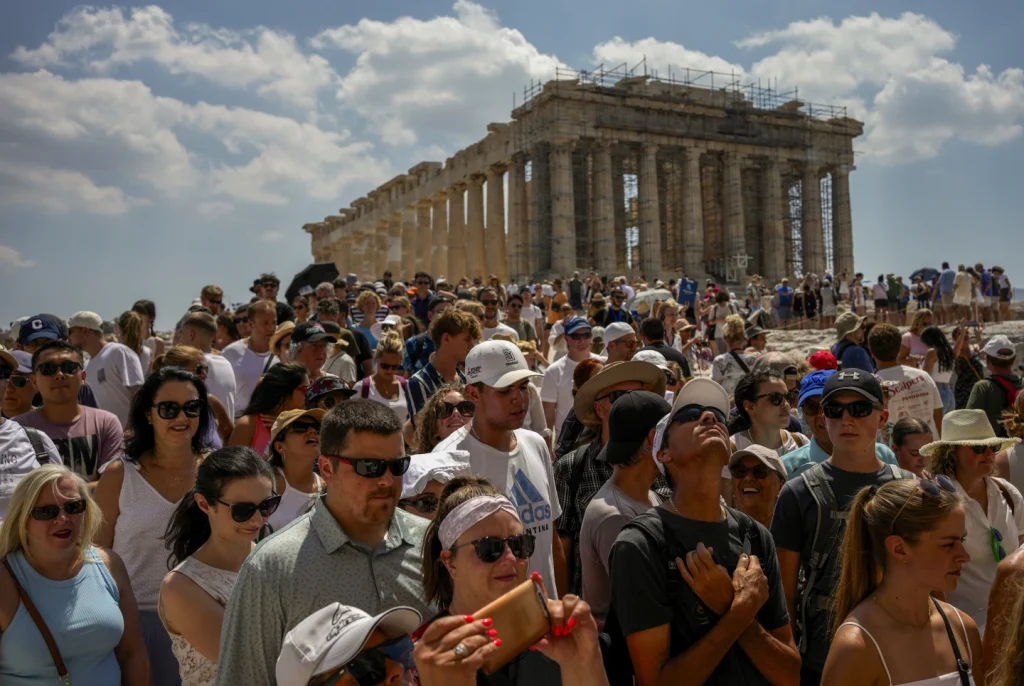As the world slowly emerges from the pandemic, tourism is picking up pace in some of Europe’s most popular destinations.
Cities like Athens, Rome, Venice, and Barcelona are experiencing a surge in visitors, with some even surpassing pre-pandemic records. The scenic islands of Santorini, Capri, and Mallorca are also seeing an uptick in tourism.
While European tourists helped the industry recover last year, this summer’s influx is largely due to Americans.
With a strong dollar and pandemic savings in some cases, many are eager to embark on their long-awaited vacations. Some are even motivated by “revenge tourism,” determined to make up for lost time and explore the world again.
However, the surge in tourism has not come without its challenges. Tourists are facing long wait times at popular attractions like the Acropolis in Athens and taxi lines at Rome’s main train station.
In Venice, crowds are so concentrated around St. Mark’s Square that bridges are getting backed up even on weekdays.
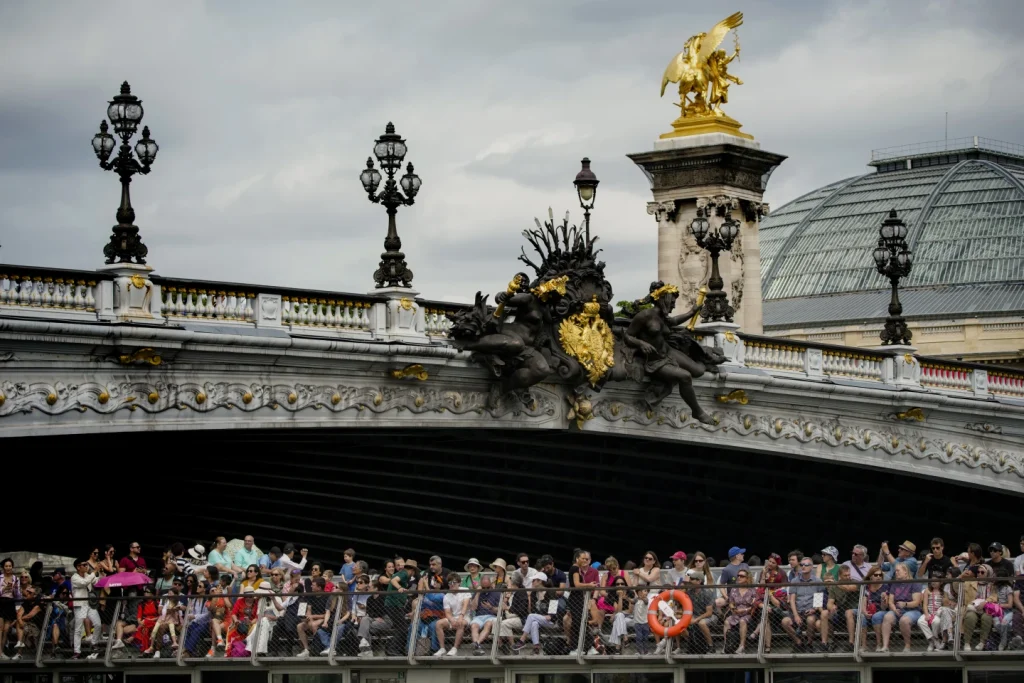
Despite these challenges, the return of tourism is a promising sign for the industry and for those whose livelihoods depend on it. As more people get vaccinated and travel restrictions ease, it is likely that tourism will continue to pick up pace in the coming months.
A group of friends, led by Lauren Gonzalez, recently embarked on a 16-day adventure through Italy’s most iconic cities.
Despite the high prices and crowded tourist attractions, they were determined to make the most of their trip and create unforgettable memories.
As they journeyed through Rome, Florence, and the seaside, they marveled at the rich history and culture that surrounded them. For these young adults in their mid-20s, this trip was more than just a vacation – it was a moment of change in their lives.
They had saved up for this special experience and were eager to explore all that Italy had to offer. The crowds and heat were no match for these seasoned travelers who hailed from Florida and had braved Disney World in similar conditions.
With each passing day, they grew closer as friends and savored every moment of their Italian adventure.
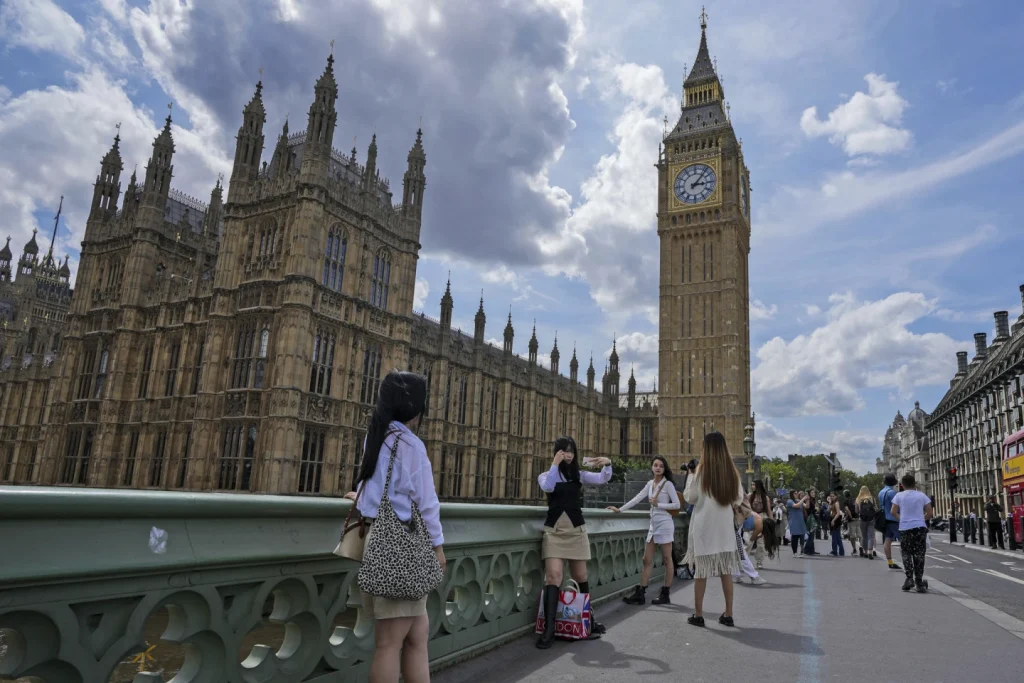
The recent riots in Paris and other French cities seem to have little effect on American tourists. Despite a slight drop in flight bookings, mainly for domestic travel, many tourists are still flocking to the iconic Champs-Elysees shopping boulevard.
Joanne Titus, a 38-year-old from Maryland, stated that although her friends warned her about the situation, she and her family decided to take precautions and enjoy their summer vacation.
While the return of mass tourism is a welcome relief for hotels and restaurants that suffered under COVID-19 restrictions, there is a downside as well.
Pledges to make tourism more sustainable have largely gone unheeded, despite the pandemic’s lessons. Alessandra Priante, director of the regional department for Europe at the U.N. World Tourism Organization, expressed her concerns about the situation.
As we move forward, it’s important to balance the economic benefits of tourism with its impact on the environment and local communities.
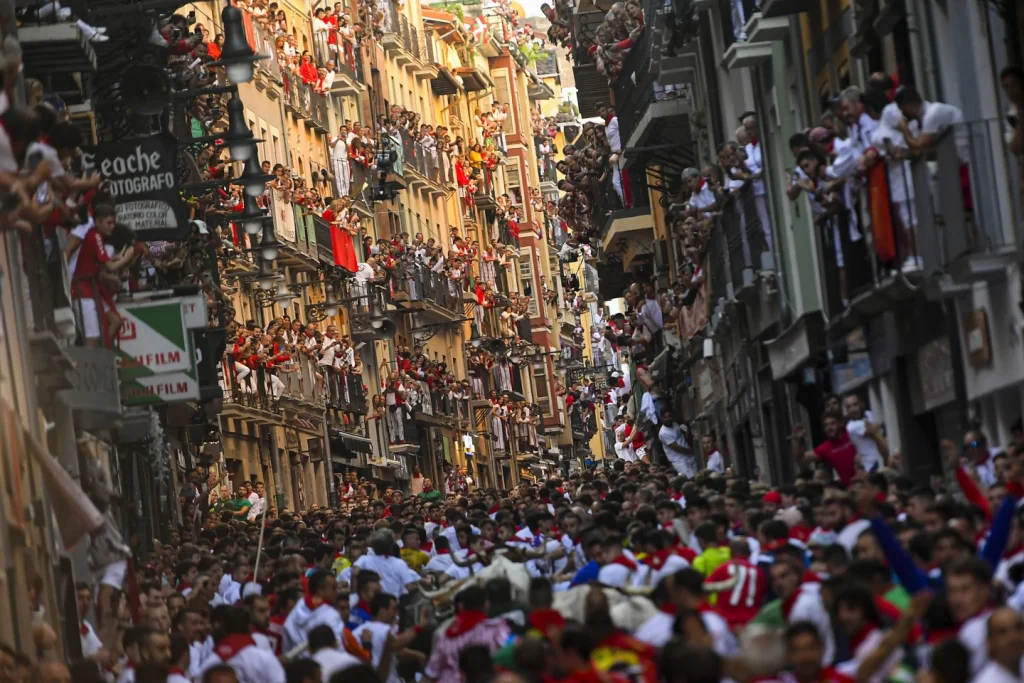
Sustainable tourism practices must be implemented to ensure that we can continue to enjoy the world’s beauty without damaging it. It’s time for us to learn from our mistakes and take steps towards a more responsible and sustainable future.
The tourism industry in Europe is facing some significant challenges in the wake of the COVID-19 pandemic.
While some areas are experiencing a resurgence in visitors, others are struggling to attract tourists back to their cities and towns.
One of the biggest issues facing the industry is the problem of overtourism. In many popular destinations, such as Barcelona, Venice, and Amsterdam, the sheer number of tourists can be overwhelming, leading to overcrowding, environmental damage, and a strain on local resources.
To combat this problem, some cities are taking steps to limit the number of visitors they receive. The mayor of Florence, for example, has stopped new short-term apartment rentals from proliferating in the historic center, which is protected as a UNESCO heritage site.
Meanwhile, mayors of other Italian art cities are calling for a nationwide law to manage the sector.
However, not all anti-tourism movements have reappeared since the pandemic began. While some areas are still grappling with the issue of overtourism, others are seeing a decline in visitors due to travel restrictions and safety concerns.
Despite these challenges, travel to and within Europe is slowly beginning to recover. According to the World Tourism Organization, overall travel to Europe is still down 10% from 2019, but some areas are experiencing a resurgence in visitors as restrictions are lifted and travelers become more comfortable with the idea of traveling again.
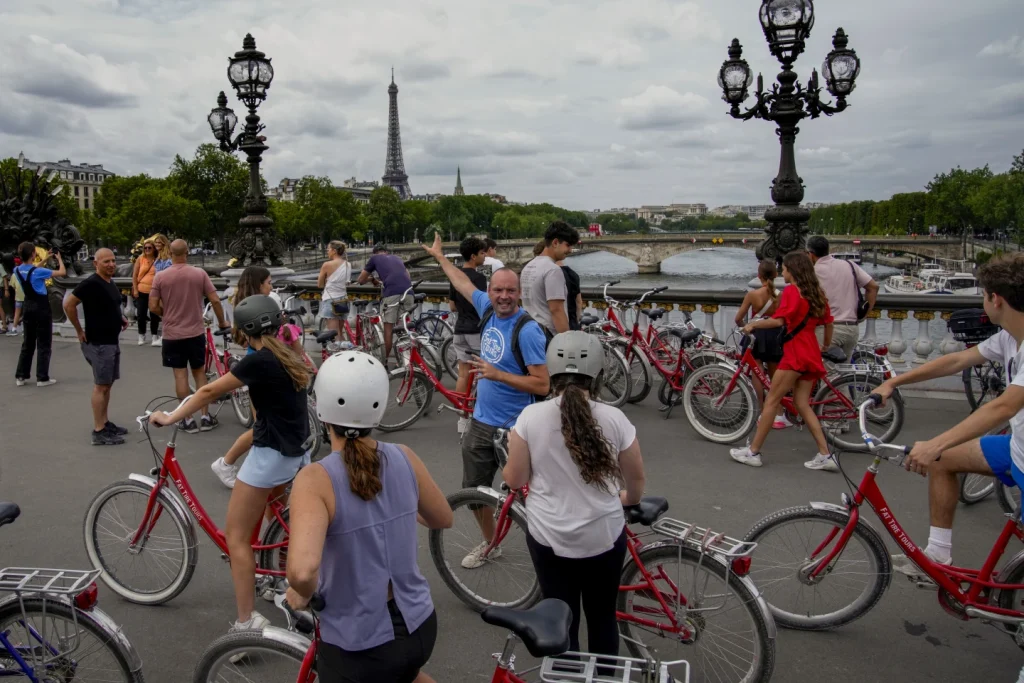
One area where travel is still lagging behind is in visits from China and other Asia-Pacific countries. Flights from these areas are down 45% from 2019, according to travel data company ForwardKeys. This is likely due to ongoing travel restrictions and safety concerns related to the pandemic.
Looking ahead, it’s clear that the tourism industry in Europe will continue to face challenges as it navigates the post-pandemic landscape. However, with careful planning and a focus on sustainability, it’s possible to create a more responsible and resilient industry that benefits both visitors and locals alike.
Greece is hoping to welcome around 30 million tourists this year, which is still a little short of the record of 34 million set in 2019.
However, the number of flights is up so far, and the most popular tourist hotspots are bearing the brunt of the influx.
The Culture Ministry has announced that it will be introducing a new ticketing system for the Acropolis to help even out crowds, but no solution has yet been found for the parking line of cruise ships on the islands of Mykonos and Santorini on busy mornings.
Meanwhile, Spain’s tourism minister, Héctor Gómez, has hailed this summer as “historic” for tourism, with 8.2 million tourists arriving in May alone, setting a new record for the second month in a row.
However, some hotel groups have reported that reservations slowed down in the first few weeks of summer due to steep price increases for flights and rooms.
The cost of flights from the US to Europe has risen by 2% from 2019 levels, according to ForwardKeys. This is partly due to the growing appetite for long-haul travel from America, which is being fuelled by the so-called “revenge travel” trend caused by the pandemic lockdowns.
As a result, big cities in popular European countries are expected to be particularly busy this summer.
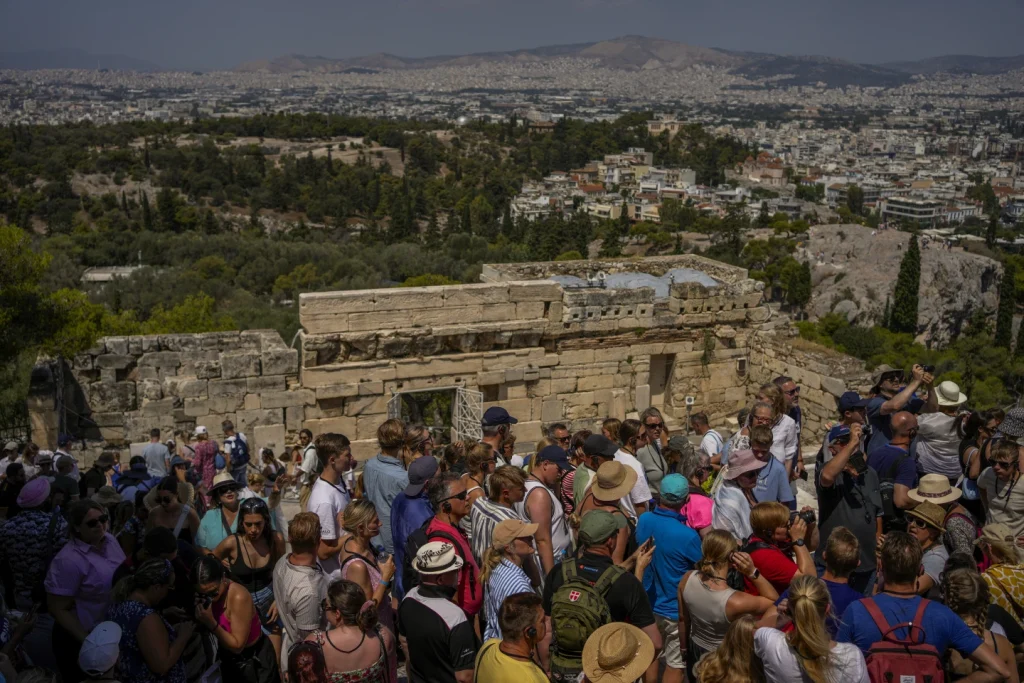
Italy has also seen a surge in tourist arrivals, with Americans flocking to bucket-list destinations such as Rome, Florence, Venice, and Capri. In fact, according to Italy’s hotel association, Federalberghi, these destinations are now seeing more visitors than they did before the pandemic.
Overall, it seems that tourism is making a strong comeback across Europe this summer, despite the ongoing challenges posed by the pandemic. However, it remains to be seen whether this trend will continue into the autumn and beyond.
The tourism industry is making a comeback in Europe, with Greece and Spain expecting millions of visitors this summer.
While Greece is still shy of its 2019 record of 34 million visitors, the number of flights has increased, and tourist hotspots are experiencing high traffic.
To manage crowds, the Culture Ministry in Greece is introducing a new ticketing system for the Acropolis, providing hourly slots for visitors.
However, no solution has been found yet for the parking line of cruise ships on the islands of Mykonos and Santorini on busy mornings.
Spain’s tourism minister, Héctor Gómez, has called this a “historic summer for tourism,” with 8.2 million tourists arriving in May alone, breaking records for a second straight month.
However, some hotel groups have reported slowed reservations in the first weeks of summer due to the steep rise in prices for flights and rooms.
The costs of flights from the U.S. to Europe have gone up by 2% from 2019 levels, according to ForwardKeys.
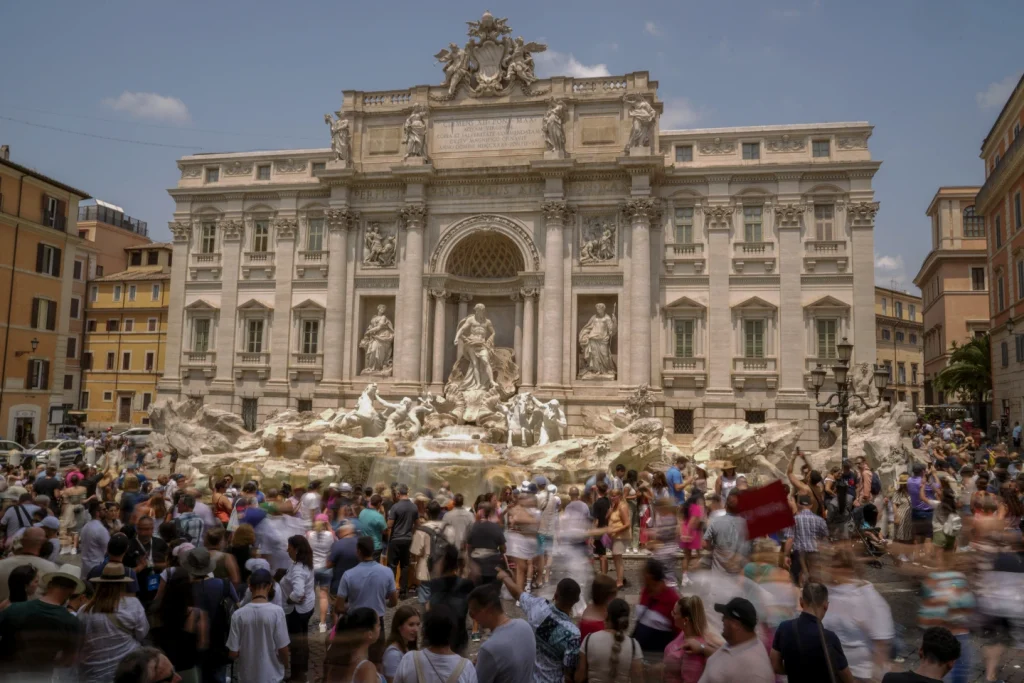
Despite the higher costs, Americans are still eager to travel to Europe, with many booking trips to popular destinations like Rome, Florence, Venice, and Capri in Italy. Italy’s hotel association, Federalberghi, reports that arrivals in these bucket-list destinations have surpassed pre-pandemic levels.
This trend is expected to continue throughout the summer, with big cities in popular European countries likely to be busy.
Overall, the tourism industry is slowly but surely recovering in Europe, with Greece and Spain leading the way.
While challenges remain, such as managing crowds and rising costs, the industry is optimistic about the future and looks forward to welcoming visitors from around the world.
The issue of overtourism in Venice has become a growing concern for both residents and tourists alike. With nearly as many tourist beds as there are residents in the historic center, the city is facing a serious problem.
Visitors are flooding the streets, making it difficult for locals to go about their daily lives. Students are struggling to find affordable housing, and the lack of residents means a lack of services, including family doctors.
The high cost of living, driven up by tourist demand, is making it increasingly difficult for people to live in the city.
While Florence’s mayor has taken steps to limit short-term rentals in the historic center, no such action has been taken in Venice.
This has led to a situation where apartment owners are cashing in on vacation rentals, leaving fewer and fewer options for those looking for long-term housing.
The result is a city that is becoming increasingly dependent on tourism, with little regard for the needs of its residents.
Some have suggested implementing a tax on day-trippers to help curb arrivals, but this may not be enough to solve the problem.
Instead, it could further cement Venice’s fate as an amusement park rather than a living city. There needs to be a more comprehensive approach to addressing the issue of overtourism in Venice, one that takes into account the needs of both residents and tourists.
Until then, the city will continue to struggle with the consequences of its own popularity.
